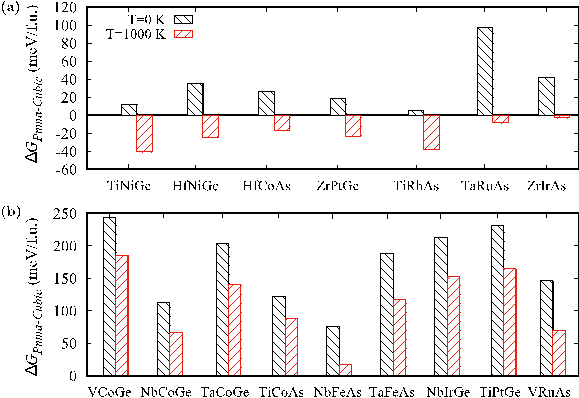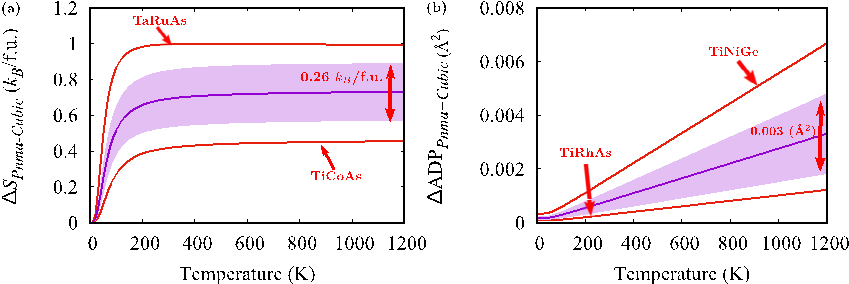
Recently, the group of Prof. ZHANG Yongsheng, working at Institute of Solid State Physics, Hefei Institutes of Physical Science, has revealed that vibrational entropy stabilizes distorted half-Heusler structures.
Owing to the excellent electrical properties, thermal stability, and mechanical robustness, Half-Heusler (HH) compounds are promising functional materials, including thermoelectrics, topological insulators and optoelectronics. The first-principles investigations conducted at 0 K predict that the cubic HH structure is the most stable phase for many valance-balanced ABX compositions.
Therefore, many high-throughput (HT) computational studies have examined possible compositions in the cubic HH structure to discover new HH materials, especially in the thermoelectric field. However, some of the proposed compositions are experimentally observed to be noncubic low-symmetry phases. The failure of density functional theory (DFT) to correctly predict the phase stability of these HH compositions has not been well explained.
DFT calculations are good at predicting 0 K properties, neglecting the entropy contribution to the free energy. However, in experiments synthesis temperatures of HH compounds can be higher than 1000 K, where vibrational entropy would play vital role in the phase stability.
In this work, ZHANG's group studied the 17 HH compositions whose cubic phase has the lowest energy (DFT-0 K calculations) and with a competing distorted low-symmetry (one P63mc and 16 Pnma) phase.
Based on the vibrational calculations on the phase stability of 17 cubic and distorted phases, they found that the vibrational entropy could favor the distorted HH (P63mc or Pnma) phases in all 17 HH compounds at high temperature.
The larger vibrational entropies of low-symmetry phases were due to the weaker bonding and strong motions of A and B atoms that compressed the acoustic phonons, which resulted in a large phonon DOS at the low frequency region compared with the cubic counterparts.
Moreover, the team also discovered that the contribution of alloying induced entropy tended to stabilize the low-symmetry (orthorhombic) phase in the mixed Ti0.5Hf0.5NiGe system.
They believed that their work may explain that vibrational entropy is the driving force behind the discrepancy between 0 K DFT predictions and experimental results and suggests low-temperature synthesis routes to prepare the cubic HH phases in experiments.
The research was supported by the National Natural Science Foundation of China, the U.S. Department of Energy and the China Scholarship Council.

Fig. 1. Free energy differences of (a) seven and (b) nine HH compositions between orthorhombic (Pnma) and cubic (F) phases. The black (0 K) and red bars (1000 K) represent the free energy difference at different temperatures. The free energy difference between the two phases decreases with temperature in every case. (Image by GUO Shuping)

Fig. 2. Temperature dependence of (a) vibrational entropy difference (b) average atomic displacement parameter difference (ADP difference) of A and B atoms along x direction for 16 systems between orthorhombic (Pnma) and cubic (F) phases. The purple line and zone are average and standard deviation, respectively. (Image by GUO Shuping)

86-10-68597521 (day)
86-10-68597289 (night)

52 Sanlihe Rd., Xicheng District,
Beijing, China (100864)

